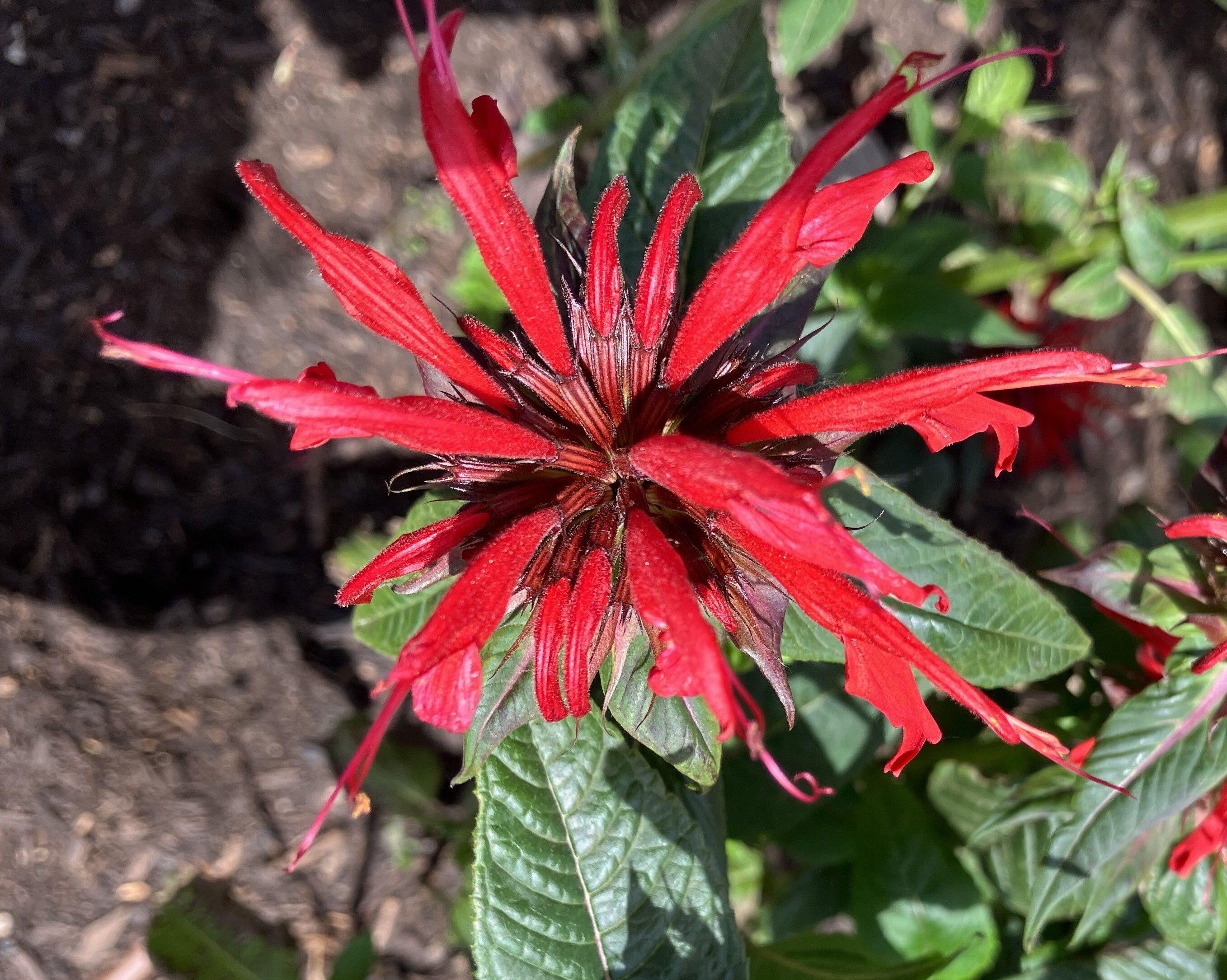
The hot dry weather that is predicted will keep disease problems at a minimum. Keep plants well-watered, but keep irrigation water off of branches and leaves to avoid new disease infection. You may want to move potted vegetable plants out of full day sun, they will be happy to have some afternoon shade.
We are catching Codling moths now, and seeing a small amount of new codling moth feeding on the outside of apples in some sample sites. Spinosad is the least toxic option and malathion is the hard pesticide option.
Apple Scab is being seen on susceptible varieties of apples -
Grasshopper populations are increasing in some locations as grassy areas dry up, or if neighbors hay fields near your garden, grasshoppers may move into gardens and landscapes. If they are a serious problem, you can apply quicker-acting carbaryl-treated bran baits to affected plants. These insecticide-laced baits can injure birds if they eat them. You can also cover garden plants with polyethelene shade cloth or remay to decrease grasshopper feeding and shade plants to encourage more vegetative growth. Grasshoppers usually decrease towards the end of summer into early fall.
Mountain Pine Beetles are attacking pines in our area now. Unsuccessful new attacks will have pitch tubes with tiny ¼ inch long, black mountain pine beetles stuck in them. Pitch tubes are popcorn sized globes of pitch that come out of the little bore holes pine beetles make in pine tree trunks. If pine trees are healthy and given enough irrigation, they have a better chance of protecting themselves. Irrigate large pine trees with a soaker hose once a week in this hot weather while mountain pine beetles are attacking.
Aphid populations are decreasing. You may still see curled leaves from earlier aphid infestation, but few aphids are present inside curled leaves at most locations. There is no need to spray for older aphid infestations now at most sites.
Eriophyid mites are responsible for yellow to brown to red spots and blisters on apple, pear, and mountain ash leaves. It looks like disease on apple leaves sometimes. It is too late to spray for blister and rust mites.
Spider mite populations are increasing in our sample sites.
Black vine weevils are feeding on the leaf margins of lilac and rhododendron now. They feed at night and start at the base of shrubs, leaving a scalloped look to leaf margins. Damage is usually cosmetic only – no need to spray.
Browning tips of fir & spruce trees are signs that the western spruce budworm or tussock moth has been feeding on the new growth. Control measures should be applied when the new growth begins next spring. Some Tussock moths are still able to be sprayed with products like permethrin or carbaryl. They have gotten to large in most locations for BT to be effective. Trees will recover if defoliation only occurs for a couple years.
Wilting spruce tree terminals (top branches) can mean White Pine Weevil larvae are feeding inside the tip branch. Remove and destroy wilted, browning spruce tips as soon as you see them.
Knapweed is at full- bloom. Now is the best time to mow knapweed to diminish seed dispersal.
This is a good time to divide your bearded Iris now. The Iris society sale is July 27th at Fort Missoula. Early spring blooming perennials such as bleeding hearts are turning yellow and starting to go into dormancy now.
